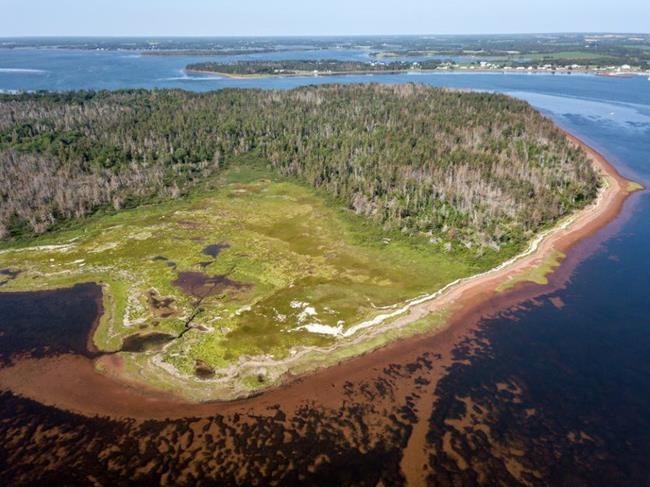ALBERTON, P.E.I. — A small, undeveloped island off the north shores of P.E.I. where blue herons, bald eagles and double-crested cormorants nest is set to be purchased by the Nature Conservancy of Canada and eventually placed under the full-time stewardship of the Mi'kmaq.
The Nature Conservancy of Canada announced plans this week to buy Oulton’s Island, which is about one square kilometre in size and an important habitat not only for majestic birds but also woodland creatures such as snowshoe hare, red squirrel and migrating waterfowl.
The island, about 400 metres from Cascumpec Bay, has four kilometres of beach shoreline and supports salt marsh and freshwater wetland ecosystems and is also home to Acadian forests composed of jack pine, black spruce and white birch.
"We like the idea of protecting coastal islands," Lanna Campbell, Nature Conservancy of Canada's program director for Prince Edward Island, said in a recent interview. "It's an area of refuge for wildlife because they're often inaccessible to motorized vehicles or a lot of people, so they're just really quiet havens for wildlife."
The organization had its eyes on the island since the 1980s and stayed in touch with the landowners, she said. The conservancy bought the land for $1.2 million but still needs to raise about $300,000 to complete the purchase.
"It's a beautiful coastal forest," Campbell said. "We found a nesting great blue heron colony, which is a really impressive, beautiful bird. It always kind of looks like a dinosaur to me. We also found other birds nesting there, like double-crested cormorants. There's lots of eagles that live there. And so, once we really started to explore it, we knew it was a special place for wildlife."
About 90 per cent of Prince Edward Island is privately owned, and most landowners are good stewards, she said. But there is always the risk that if private property is sold to someone, they might log trees or "threaten its integrity," she added.
The Nature Conservancy of Canada, she said, has undertaken several conservation projects across the country. For example, the group negotiated the release of development and mineral rights to land in British Columbia to make it available for Indigenous-led conservation.
Darlene Bernard, chief of the Lennox Island First Nation, in P.E.I., called Oulton’s Island an important piece of territory. The Mi’kmaq word for the area — Kwesawe’k — translates to “end of the island cape” or “end of the headland,” she said.
"It's an island that has magnificent wetlands and a home for all kinds of special little creatures," she said. "And you know, our people would have used that island to sustain ourselves for generations."
She said the First Nation welcomed its partnership with the conservancy to protect the land, adding that she doesn't foresee any commercial development in the area. The conservancy's plan is to transfer ownership of the land in about five years to the Epekwitk Assembly of Councils, a Mi'kmaq governing body.
"Well, I think we would want to keep it in its pristine state that it's in now," Bernard said. "Certainly, we're not going to restrict visitors to the island. If you have a boat, you want to go over there and take a walk along its beautiful beaches and things like that, then you're certainly welcome to do that."
Campbell said she first visited the island in August, and she said it left her with quite an impression.
"It was a very sunny, beautiful day. The tide was low, so the beaches were really big," she said.
"And we were walking along in the sand watching the shorebirds, tiny little shorebirds, dance along in the sand in front of us looking for food. It was a walk around the whole island. I remember coming around a big wetland and watching a couple of really big herons take off — big, beautiful blue birds. And it just kind of felt like we were visiting a fairyland. It was a very magical spot."
This report by The Canadian Press was first published Nov. 12, 2022.
The Canadian Press



